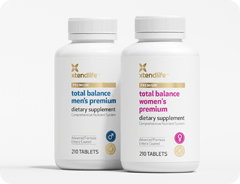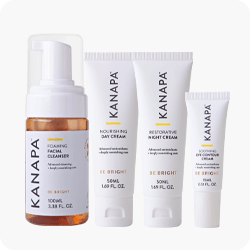Before the manufacture of any product can commence, we must have a BMR which is short for 'Batch Manufacturing Record'. This is quite an extensive group of documents relating to each batch. Without such a record there can be no guarantee that the end product will meet the specifications laid out for that formula.
The BMR covers every step of the process and is designed to pick up any potential errors along the way and spells out clearly the instructions that have to be completed at every stage and ensures full traceability with regards to the technicians, ingredients, equipment etc.

Examples of BMR
OK, we start by collecting the ingredients from the approved ingredient storage area in the factory.

Ingredients Being Selected Using the Pallet Truck
We now come to a critical part of the process, dispensing of the ingredients prior to blending. Under GMP rules this process has to be performed by two technicians so that each ingredient can be independently verified. There is no room for error with this process. Now, it is often stated that dietary supplements are safe, and so they are if the correct ingredients are used in the right amounts.
Some manufacturers have been quite critical of the requirement to have two people carrying out this process as it effectively doubles the labour cost of this process, but, that criticism is not warranted because without this requirement mistakes could be made due to human error.
For example, a formula may contain both Manganese Citrate and Magnesium Citrate. Magnesium Citrate is harmless and used in large amounts in many formulas. Manganese on the other hand is an important mineral which must only be used in minute amounts. There is a potential for the names of the two ingredients to be confused with each other. That would be a serious mistake which would mean that the product could not be released. Therefore, every ingredient is given a unique code in addition to the ingredient name. Both of these are always checked by the second operator and by QC at a later stage.
So, the rules are justified and should be followed meticulously!

The Dispensing Process
When the ingredients are dispensed, we do things a little differently at Xtend-Life, particularly when we are manufacturing our complex formulations such as Total Balance.
Instead of putting all the ingredients together we have a complex protocol for blending which takes several hours longer per batch than 'conventional blending processes'. We group various ingredients together and for the very low dose ones we blend them separately with some of the other low dose ingredients. These 'pre-blends' are then added to the main blend as per a protocol which we have developed for each product.
How that is done is by doing test blends with specific markers at various 'doses' and then taking samples and sending to a lab to check the uniformity of the markers in the blend. This provides valuable information on the effectiveness of the blending protocol, allowing adjustment to be made if required.

Grouping of Low Dose Ingredients
After all the ingredients have been weighed out and put together in their respective groups we pass all of them through a sieve so we can view all the powders to ensure that they are free flowing.

Passing the Group Through the Sieve
The next step is to start the blending process. As I mentioned earlier, this is a complex process and one which we have developed and refined over the years. It is crucially important to the end product because if this step is not done correctly you will end up with a substandard product due to uneven distribution of ingredients.
This is one of the reasons why when some manufacturers products are tested by third parties that they sometimes find that there may be too little of some ingredients or too much of another. It is possible they put the correct amount of the ingredient in but it hasn't been blended evenly. This is very common when a manufacturer uses a ribbon blender which is the type widely used in the industry. The problem with this type of blender is that the ingredients 'stratify' which means heavier particles settle to the bottom.
It is often a problem with products that are produced by contract manufacturers who produce a wide range of products and may not have had the time or the margins on a particular batch are too slim to establish proper blending protocols for that particular product.
To overcome the problem of stratification we had built a special '3D' blender which has a rather odd motion but is the most effective means of blending powders. It doesn't have baffles but rather uses gravity to do the mixing.
At the presentation at A4M when I showed this blender, I suggested it was a good unit to wash cats or dogs! Some attendees enjoyed that, but some didn't! Don't worry, I don't wash my dog in it!
That will do for this post. Next week I will explain what we have to do to ensure that the tablets we produce from the blend meet required specification.

 Supplements
Supplements Bundles
Bundles




